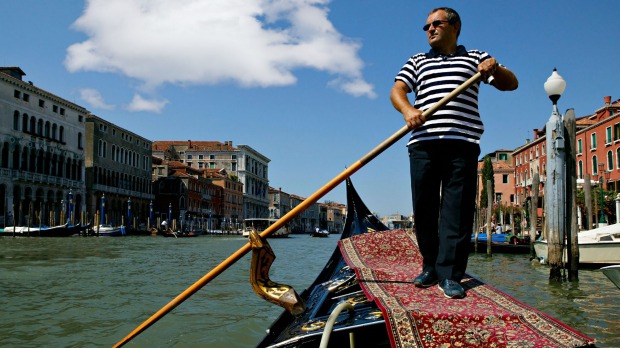
"You'll find me easily," Piero Dri says over the phone. "I'm in Cannaregio off Strada Nuova just past Apostoli church. Over the bridge. Can't miss it."
Venice has 400-plus bridges and "over the bridge" does not pinpoint an address. Add a street-numbering system designed by the devil and finding even a church or a palazzo can be challenging, but there he is, in a glass-fronted workshop littered with wood shavings and lined with sculptural hunks of wood. Slim and bespectacled with hipster stubble, Dri looks every bit the academic astronomer he once was.
I've found him through Italian Stories, a website that takes you behind the scenes for a session with Italian artisans. In Venice, the website offers a choice of an hour or so with a glass bead maker, a silk screen printer, a mask maker, a weaver, a gold beater or a lithographer. For a traveller looking for a different perspective on an Italy less travelled, Italian Stories is a perfect resource.
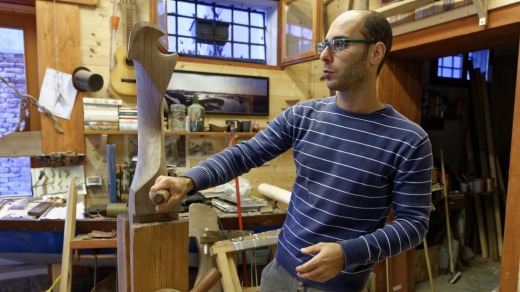
Dri is a remer, an artisan who makes the remi, or oars, for gondolas. "Remi, yes," he says, "but the real work is in the forcola, the gondola's rowlock."
One forcola sits wedged into a wooden vice in Dri's workshop, a smooth, laminar hunk of timber a little over a metre long, crafted from walnut. A forcola is a thing of great beauty. Curvaceous and smooth – you can't help running your hand over it – the forcola looks like a Brancusi sculpture, but it's also a complicated piece of engineering. By slipping his oar into a different part of the forcola, the gondolier can change from propelling the gondola forward to braking and stopping his vessel, backing it down or wheeling it left or right in its own length – and a tight turning circle is essential in Venice.
There is no such thing as a one-size-fits-all forcola. "It all depends," Dri says. The height of the gondolier, his style of rowing are considerations. "I must also respect some rowing preferences. Close to San Marco, there are more waves, so the gondolier must bend his legs; he's lower down. The average depth of the lagoon is only 50 centimetres at low tide and so the gondola has to have a flat bottom, so it doesn't naturally steer well. Most places, you can wade in the lagoon, there are lots of boats, so the waves are short and choppy. A calm day on the lagoon almost never happens."
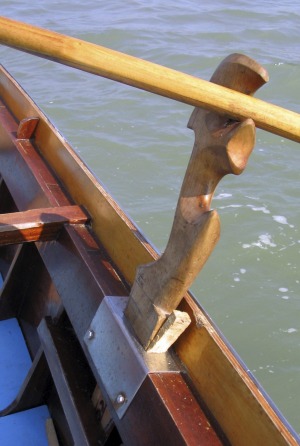
In London a week later, I'm looking at paintings of Venice by Canaletto done more than 250 years ago and the flitting gondolas on the Grand Canal might have been painted yesterday, except there are two gondoliers, rowing on opposite sides fore and aft. In the 19th century, the boat builder Tramontin modified the traditional gondola into the elegant and highly manoeuvrable modern craft of today, rowed by just one gondolier.
"Look," Dri says, "a gondola is 11 metres long, yet only six metres along the waterline and it's like this." He traces the outline of a gondola seen from above in the sawdust of a bandsaw table. "This is the gondolier," he says, putting a dot at the stern, "and this" – he stabs a finger at the boat –"is not symmetrical. The left side of the gondola is longer and fatter than the right."
Since the gondolier rows the boat from the right side, it has a tendency to bear left. Without twisting the oar at the end of the stroke to bring the vessel back on course, and thereby reducing the power of his stroke, the gondolier would be scraping his boat along the walls of the narrow canals it must negotiate in the innards of the city. A gondola costs about €30,000 ($47,000) and its glossy black sides are vulnerable. By making an asymmetrical vessel, the gondola builder creates resistance on the left side, allowing the gondola to travel in a straight line, even when the gondolier is applying all his power to his stroke on the right.
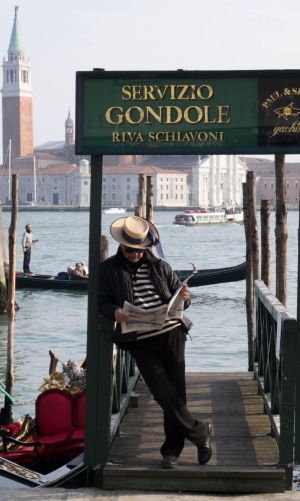
It's a minor insight, but I now know a few things about gondolas and Venice that almost no other tourist does. I'm also keen to take a gondola ride, despite the €80 price tag, but I want something different from the tourist hordes that clog the canals of the San Marco district.
"Go to the north," Dri says. "It's quieter and the canals are like this," he says, shrinking his hands parallel to make a narrow corridor. "Campo della Maddalena. Ask for Ilario. Tell him Piero, the remer, sent you, but they all know me. It's that kind of a job."
italianstories.it/en/home.
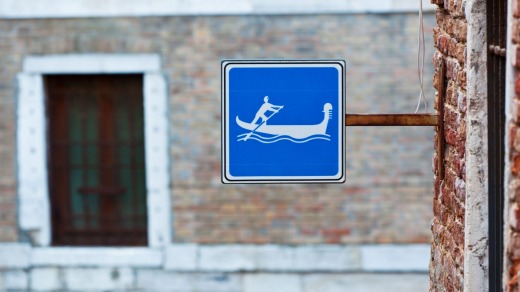
The easiest access to Venice is via Marco Polo Airport, from where a shuttle bus makes the journey to Santa Lucia railway station, followed by a vaporetto ride along the Grand Canal.
The city is also easily accessible by trains, terminating at Santa Lucia station.
Airbnb is a good option for visitors looking to stay in Venice and avoid the high price of hotel accommodation, with the option to prepare some home-cooked meals. See airbnb.com.au.
Michael Gebicki travelled at his own expense.